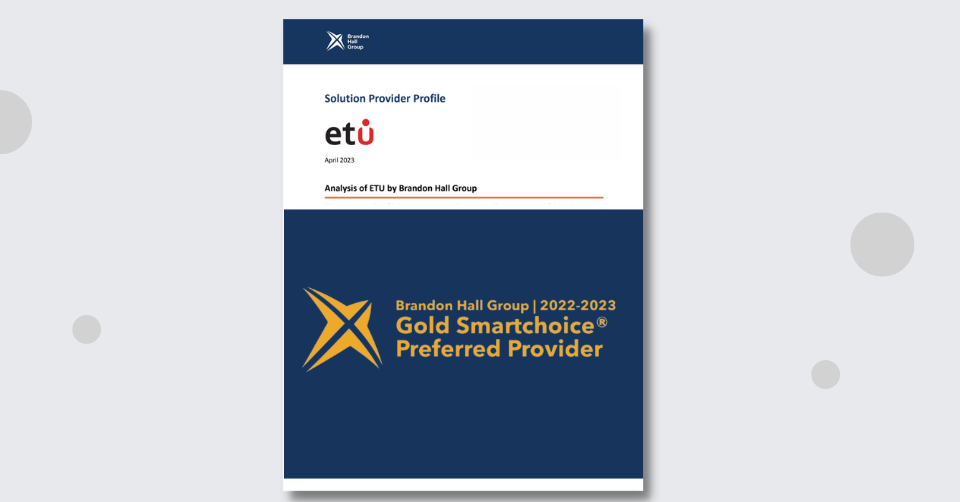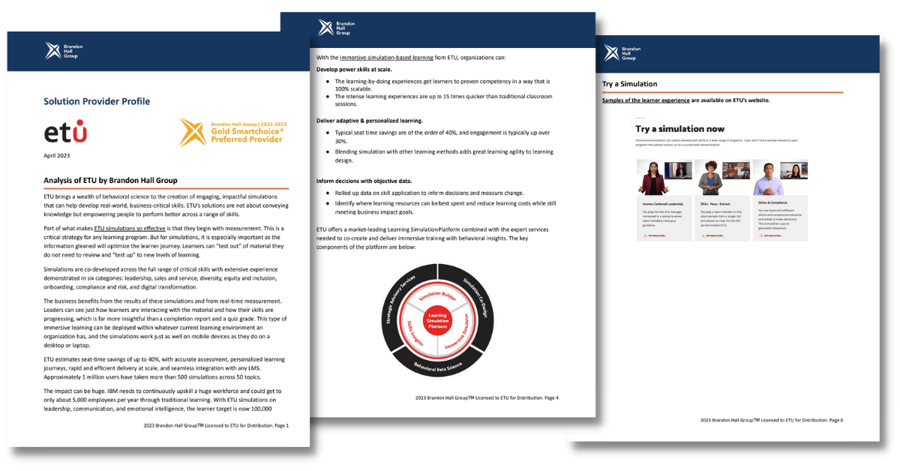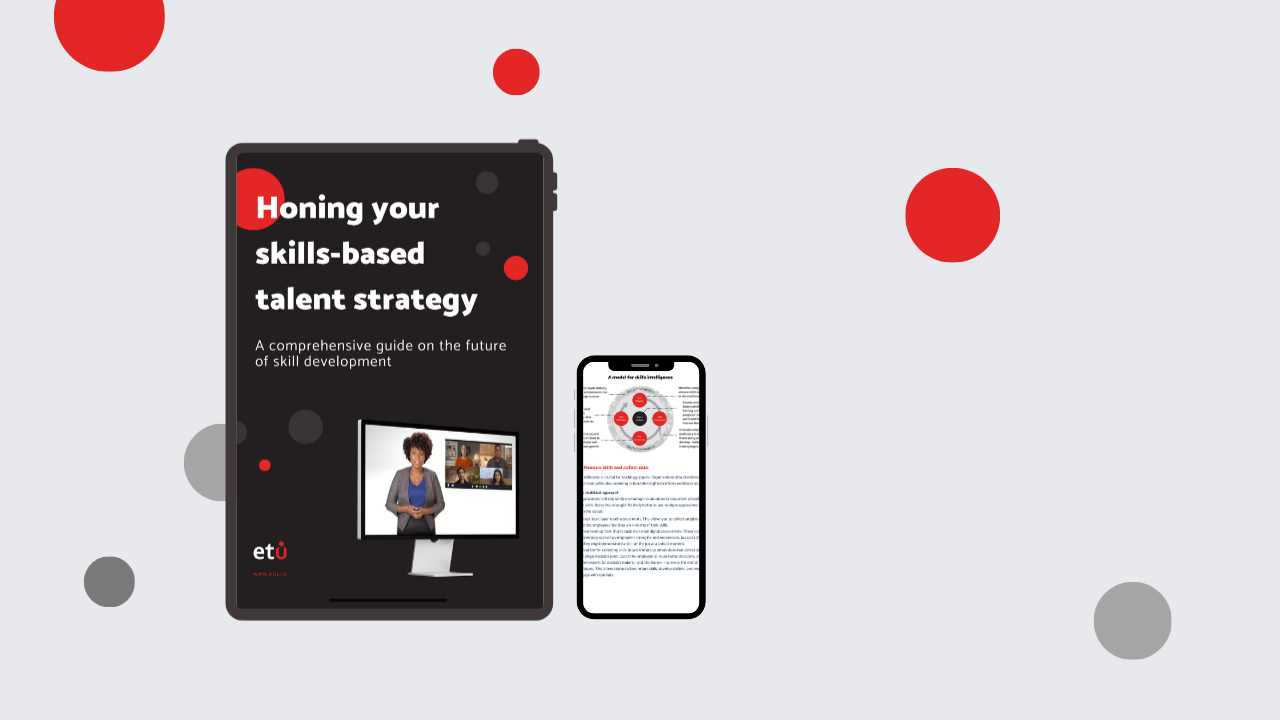
Solution provider profile by Brandon Hall Group
Analyst firm Brandon Hall Group recently updated its profile of ETU. Their analysts thoroughly examine how we fit into the marketplace and how our offerings impact our customers. Excerpts from the profile follow below, and the full report is now available for download.
ETU as the answer
ETU brings a wealth of behavioral science to the creation of engaging, impactful simulations that can help develop real-world, business-critical skills. ETU’s solutions are not about conveying knowledge but empowering people to perform better across a range of skills.
Part of what makes ETU simulations so effective is that they begin with measurement. This is a critical strategy for any learning program. But for simulations, it is especially important as the information gleaned will optimize the learner journey. Learners can “test out” of material they do not need to review and “test up” to new levels of learning.
Simulations are co-developed across the full range of critical skills with extensive experience demonstrated in six categories: leadership development, sales and service, diversity, equity and inclusion, onboarding, compliance and risk, and digital transformation.
The business benefits from the results of these simulations and from the real-time measurement. Leaders can see just how learners are interacting with the material and how their skills are progressing, which is far more insightful than a completion report and a quiz grade. This type of immersive learning can be deployed within whatever current learning environment and organization has, and the simulations work just as well on mobile devices as they do on a desktop or laptop.
ETU estimates seat-time savings of up to 40%, with accurate assessment, personalized learning journeys, rapid and efficient delivery at scale and seamless integration with any LMS. Approximately 1 million users have taken more than 500 simulations across 50 topics.
The impact can be huge. IBM needs to continuously upskill a huge workforce and could get to only about 5,000 employees per year through traditional learning. With ETU simulations on leadership, communication, and emotional intelligence, the learner target is now 100,000 learners per year. With reduced seat time compared to traditional learning, IBM could realize up to $16 million in savings by the time it reaches the 100,000 learner level.
It’s important to note the simplicity and efficiency of ETU’s Simulation Builder. The templates and frameworks make it easy for almost anyone to create an effective simulation quickly, removing one of the barriers that keep companies from exploring simulation-based learning.
“Organizations that have thought of simulations as either too far-fetched or too expensive should take another look. The kind of simulations being created by ETU provides the kind of application and reinforcement organizations have typically been unable to deliver.”
Michael Rochelle, Chief Strategy Officer and Principal HCM Analyst, Brandon Hall Group
Latest Updates on ETU
In August 2022, ETU announced a strategic growth investment led by Mission Springs Ventures and Pacific Lake Partners, along with participation from other private investors. As part of the transaction, Katie Laidlaw joined the business in the role of CEO.
In addition to certification in ISO 9001 Quality Management and ISO 27001 Information Security Management, ETU achieved certification for ISO 27701 Data Privacy extension in January 2023, making it one of the world’s first learning technology companies to do so.
The latest Learning Simulation Platform (LSP) release – Spring 2023 -- offers new interaction types to learning architects and designers along with more sophisticated personalization. The new release also enhances language management, allowing immersive learning experiences to be rolled out globally for a fraction of the effort.



